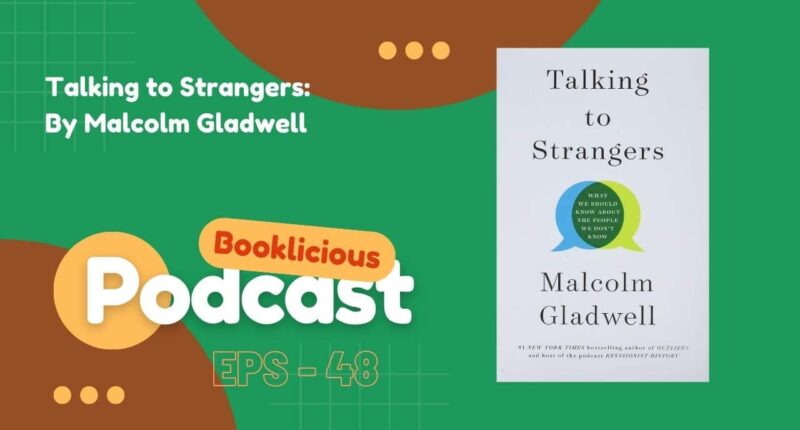Welcome, dear listeners, to another episode of “Booklicious Podcast,” a podcast where we explore books and today we are talking about, “Talking to Strangers: What We Should Know About the People We Don’t Know.” I’m your host, Shashi Shekhar.
At the heart of “Talking to Strangers” is a simple yet powerful idea: Our ability to understand and communicate with strangers is fundamentally flawed. Gladwell argues that we make assumptions about others based on our own beliefs and experiences, which often leads to misunderstandings and misinterpretations. To illustrate this, he presents compelling real-life stories that showcase the consequences of our inability to accurately read strangers.
One such story is that of Amanda Knox, an American exchange student who was wrongfully convicted of murder in Italy. Her case highlights how cultural differences, miscommunication, and preconceived notions can have devastating consequences.
Another striking example is the encounter between Sandra Bland, a young African-American woman, and Texas State Trooper Brian Encinia. Their seemingly ordinary traffic stop escalated into a tragic and unnecessary conflict, ultimately resulting in Bland’s death. This incident underscores how our biases and assumptions can lead to disastrous outcomes in even the most routine interactions.
Gladwell introduces us to two critical concepts that help explain why we struggle with understanding strangers: “default to truth” and “transparency.”
“Default to truth” is our natural tendency to believe that people are telling the truth unless we have strong evidence to the contrary. This inclination can be both a strength and a weakness. While it fosters trust and cooperation, it also makes us vulnerable to deception.
“Transparency,” on the other hand, is the idea that people’s emotions and intentions are clearly visible in their facial expressions and body language. This notion, however, is largely a myth. Research shows that our ability to accurately read others is limited, and we often misinterpret their emotions and intentions.

Gladwell also examines the concept of “coupling,” which suggests that certain circumstances or environments can influence people’s behavior. This idea challenges the assumption that people’s actions are solely a reflection of their personality or character.
One example he uses to illustrate this is the story of Sylvia Plath, a renowned poet who died by suicide. Her death was not just a result of her depression, but also the specific circumstances and environment she was in. Understanding this concept of coupling can help us develop empathy and avoid making hasty judgments about strangers.
So, how can we apply the insights from “Talking to Strangers” in our daily lives? Here are Three key takeaways that can help us better navigate our interactions with strangers:
- Recognize our biases: It’s crucial to be aware of our own biases and assumptions when interacting with strangers. By acknowledging that we are prone to make mistakes, we can approach these interactions with humility and open-mindedness.
- Practice active listening: To improve our understanding of others, it’s important to truly listen to what they’re saying, rather than trying to fit their words into our preconceived notions. Active listening involves paying attention, asking clarifying questions, and reflecting on what the other person is expressing.
- Embrace uncertainty: Recognize that we can never fully understand another person’s thoughts and feelings. Instead of trying to force certainty
Also Read: The Foxglove King: By Hannah F. Whitten | Booklicious Podcast | Episode 47



